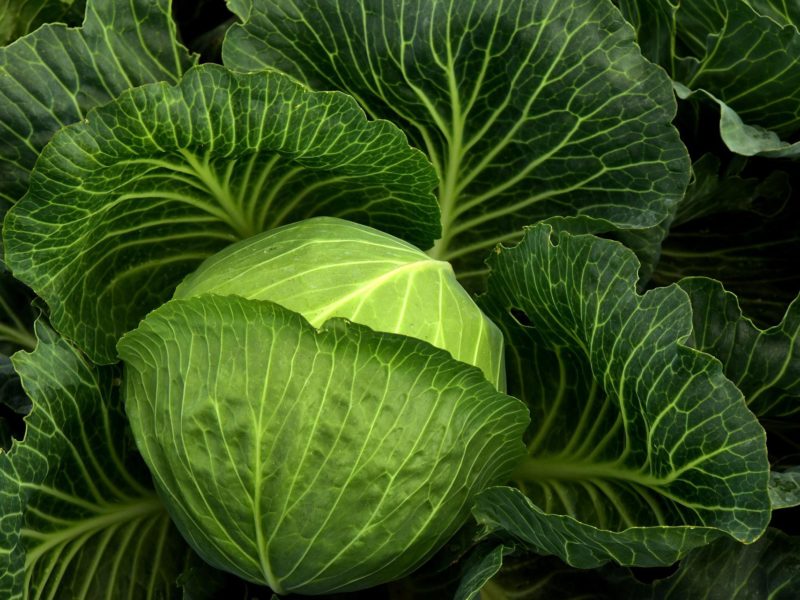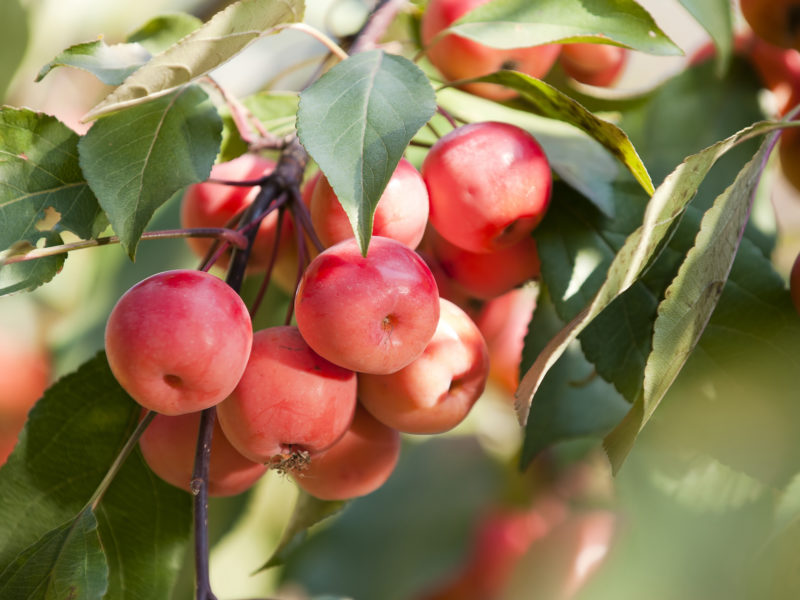First decide where to grow your vegetables. It can be as small at a yogurt pot on the windowsill, as long as there is light, and you can provide food and water, plants will grow. Some micro greens such as mustard and cress can even be grown on a damp piece of kitchen roll.
Most vegetable plants like lots of sun, so it’s important to site your vegetable patch or containers where they will receive at least 6 hours of direct light a day. South or west facing locations are the best. Place them as close to your house as you can for easy plant care and harvesting. Pots outside a sunny kitchen door are an ideal space for herbs.
Choose a sheltered spot for your pots, so your plants are kept out of cold, drying winds. Walls, fences and hedges are good locations, or try to screen the pots to reduce the effects of the wind. Using your window ledges and balconies is a great way to get started if you don’t have a garden but make sure your pots are properly secured to prevent them from blowing off.
Window boxes, troughs, raised beds, and pots of all sizes can be used, even an old wellington boot!
Pick a container to suit the size of the plant, or vice versa.
For bigger plants such as Runner beans, aim for containers with a depth and width of at least 45cm (18in), otherwise frequent watering and feeding will be needed. Make sure your chosen container is big enough and heavy enough for the fully-grown plants. It’s essential to provide good drainage to avoid waterlogging. Check that there are adequate drainage holes and that they are free from dirt or blockages.
Remember containers are reliant on you for food and water. On a hot sunny day they can dry out within hours and plants might not recover from serious wilting. Site containers as close to a water source as you can to make this an easy job.
On hot days water plants thoroughly in the early morning or evening, making sure that you don’t just wet the surface but allow it to soak down to the roots. If you don’t have any helpful neighbours drip irrigation systems are very useful if you will be away from home during part of the summer.
Fill the container with a potting compost, don’t use soil from your garden, as this is likely contain weed seeds and soil-borne pests. A lightweight and moisture-retentive mix is best for containers, and it will need topping up each season to replenish nutrients that have been used up.
Gardening in containers is an easy way of growing your own, and you can easily expand with more containers to fit the space you have.
Then decide what you like to eat, there’s no point growing courgettes if you don’t like them! Beetroot, Broad beans, Carrots, Dwarf French beans, Herbs, Peas, Potatoes, Radishes, Rocket, Runner beans, Chillies & Peppers, Salad leaves, Salad onions, Salad turnips, Tomatoes, all will grow happily in pots or grow bags.
Be willing to experiment, mangetout for example are expensive to buy, but will easily grow up some twigs in a pot for a tasty treat, and you can also use a few shoots on a salad.
Sow small amounts of seeds early in the year in containers on the window sill, or buy small plants to grow on from your local plant centre.
Top 3 Edible Plants for Containers
Salads. Salad leaves only need a shallow container a few inches deep. When summers are hot, choose an area that gets morning sunshine and afternoon shade to avoid the plants ‘bolting’ or running to seed before they’re ready for harvest. Cut-and-come-again type salad leaves can be harvested over several weeks by removing just a few outer leaves at a time, perfect for summer salads.
Tomatoes. Tomatoes need plenty of soil to supply enough nutrients right up to harvest. Many varieties such as ‘Tumbling Tom’ can be grown in hanging baskets and look great as they trail towards the floor. Other varieties can be grown in growbags, or you can use large pots at least 10in (25cm) in diameter. Make sure you use a stake and tie the plants to it to keep them upright. Depending on variety side shoots may need to be pinched out. Tomatoes are very thirsty so will need lots of water – at least twice a day in hot weather.
Potatoes. Potatoes can be grown in large pots or bags and sacks designed specifically for the job. Place the seed potatoes halfway down the pot and cover with 5cm compost. As they grow, layer more soil around the stem of the shoots, gradually building it up over a few weeks until the top of the container is reached. Potatoes will develop all the way up the stem. Freshly dug homegrown potatoes taste completely different to bought ones.
If you want to brighten up your veg patch try some edible flowers such as Violas, Nasturtiums, and Calendulas (pot marigolds). Also look for colourful varieties such as Chard Bright Lights, Runner beans were originally grown for their flowers!
Choose vegetables which can be eaten at various stages. Beetroot leaves can be used in salads or as spinach.
Aftercare should involve provision of a constant water supply but take care to avoid prolonged waterlogging. A feed of general-purpose liquid fertiliser can be applied every two weeks. If frost is likely, cover the plants with fleece and move the pots to a warm, sheltered spot.
- Beetroot:sow in March at 10cm (4in) spacings. The young leaves can be used as ‘spinach’. Follow these with quick growing crops of late summer salads
- Broad beans:sow from February at 20cm (8in) spacings. The tops can be pinched out to reduce blackfly attacks and also for use as ‘greens’. The broad beans can be followed in June or July with beetroot for late summer crops
- Carrots:sow Nantes or Amsterdam cultivars from February for June harvesting. Cover the containers with fleece from April onwards to exclude carrot fly. After the carrots, sow French beans to gather in September
- Herbs:parsley, for example, can be sown in March for harvesting from June; coriander is also an attractive and popular crop. Basil is another great Repeat crops can be sown for late summer harvest
- Lettuces:mini lettuces such as ‘Little Gem’ and ‘Tom Thumb’, spaced at 15cm (6in), can be sown from January for June harvesting. Follow the lettuces with leeks for winter harvesting
- Peas:sow ‘mange-tout’ cultivars with edible pods from March; plant them out at 15cm (6in) spacings; harvest in June and follow with salad leaves for late summer
- Potatoes:plant early cultivars from March with one tuber for every 30cm of pot diameter
Salad leaves: sow from February aiming for 5cm (2in) between plants. Rocket, coriander, lettuce, chicory and spinach are tasty choices. Harvest by pinching off the top few
- Salad onions: sow from February with 3cm (1¼in) between plants. Pull them up when they get big enough. By July, you should be able to re-sow with finger carrots for bunches of baby carrots in October
- Spinach: sow from February aiming for 10cm (4in) between plants. Spinach quickly runs to seed, so follow it with courgettes in June for late summer fruits
- Drying out is a common problem, so ensure a regular water supply, avoiding floods and droughts
- Lack of root space can be a problem in small containers, and may result in wilting and symptoms of
There’s a wide range of fruit that can be grown in pots
you will need to select the rootstock it grows on, at least for some fruit trees. The rootstock will help control the cultivar’s vigour and make it more suitable to grow in a container. Look on the label – you will often see there is a cultivar name with the rootstock printed next to it, such as Apple ‘Discovery’ M9.
As far as the type of container, clay are heavy and stable; plastic is durable, light and easier to manage. For most fruit, choose pots 45-50cm (18-20in) in diameter.
Fruit trees, vines and bushes can be planted in containers at any time of year. However, spring (March or April) is a particularly good time, as the roots soon grow and establish
When planting, place crocks (small pieces of broken clay pots) over the holes in the bottom of containers with large drainage holes to retain potting media during watering. Use a good-quality compost (John Innes No 3 is ideal), or multi-purpose compost mixed with one-third by volume grit or perlite. Incorporate controlled-release fertiliser pellets, or feed fortnightly with a high-potassium liquid
- Position fruit plants in full sun
- Water generously but allow the compost surface to dry out before the next watering, without it becoming bone dry
- Leave hardy fruit outdoors over winter
- Peaches and apricots can be covered with a lean-to shelter from autumn to late winter to protect them from rain-splash and potential peach leaf curl
- To avoid the roots becoming pot bound, re-pot every year or alternate years after leaf fall. Once in its final pot, a plant can be root-pruned every other year with 30 per cent of the compost refreshed. In intervening years, replace the top layer of compost
pruned just the same way as fruit grown in the open ground.
Container-grown fruit needs careful watering throughout the summer to prevent the fruits dropping before they ripen, and the leaves browning around the edges.


